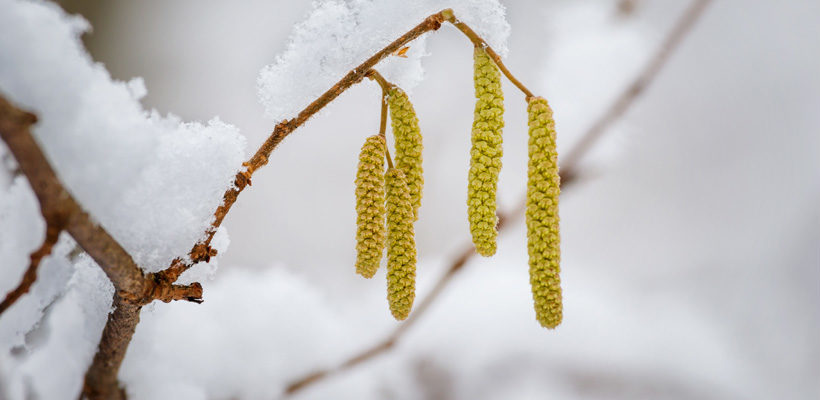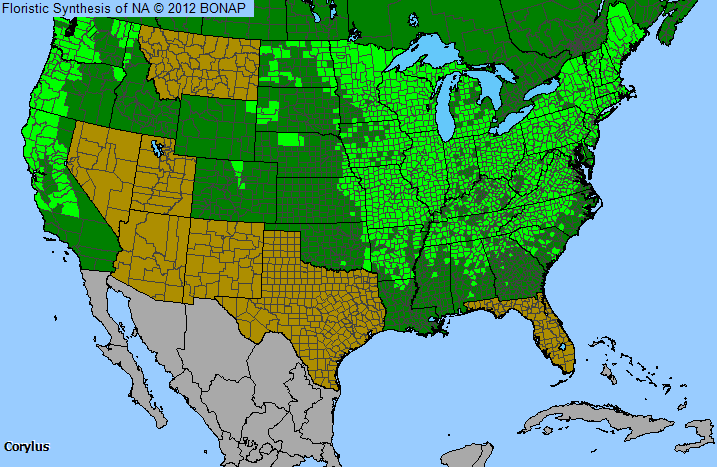
Plant Allergy Overview
Allergenicity
Moderate
Pollen Season
Winter Spring
Type
Tree
Sub-Type
Deciduous
Allergy Information
Information about Corylus pollen allergenicity is limited. Pollen allergenicity has been reported in OR and MN, especially when people live near nut orchards. Hazel pollen has been reported to cross-react with birch, alder, hornbeam, and hop-hornbeam pollens.
Genus Details
These deciduous trees (up to 75 feet tall) and shrubs (6 to 15 feet tall) are members of the birch family and grow from ME to FL and westward to OR and CA. They have flexible, thin tassels hanging down from the ends of branches (catkins) which contain pollen, and clusters of female flowers on the same plant (monoecious). The fruit is a one-seeded nut, with the nuts being used as food and flavoring agents. Hazelnuts are wind-pollinated and shed large amounts of pollen in the spring or earlier, usually around the time when pine and juniper pollen is shed.
Pollen Description
Pollen grains of Corylus are generally isopolar, suboblate to oblate or oblate-spheroidal and contain 3 pores. The pollen is faintly aspidate and the annulus is slight.
Pollen grains of Corylus vary in size from 20-25 x 26-28 micrometers.
Genus Distribution

The shaded areas on the map indicates where the genus has been observed in the United States.
 - Native, observed in a county
- Native, observed in a county  - Introduced, observed in a county
- Introduced, observed in a county  - Rarely observed
- Rarely observedSpecies in Hazelnut, Filbert Genus
Allergens & Plants Search
Enter a full or partial species name to find more information on one of over 1,200 potentially allergenic plants.
For example, you can find chenopods searching on "cheno"

